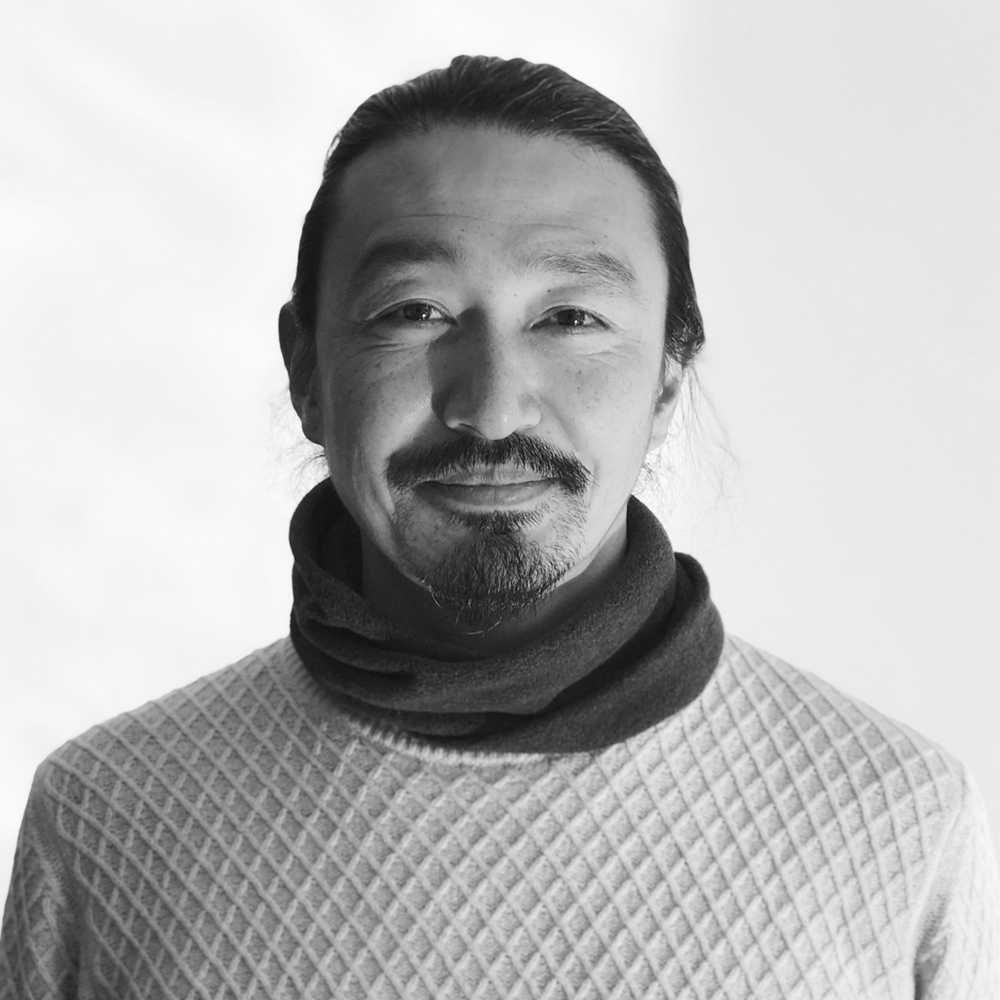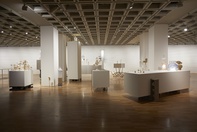Koji Ryui
Sydney
2019
Displayed 2019 at Art Gallery of New South Wales

Koji Ryui
Born 1976, Kyoto, Japan. Lives and works Sydney
Koji Ryui creates artworks that recontextualise everyday materials and found objects. With animist sensibility, minimal gestures and subtle humour, his sculptural propositions invite a compassionate and playful contemplation of the ordinary that celebrates the ambiguous space between material and perception. A collector of the commonplace, the shelves of Ryui’s studio are filled with objects and materials that remain static until they are given a new life: blurring the border between animate and inanimate, seen and unseen, Ryui draws parallels between objects and ideas, elaborating on the cosmic potential of ordinary objects and the way we perceive them.
Artist text
by Adam Jasper
There is much alchemy in everyday life. Take stone, sand and glass – prosaic materials that are both closely related and antagonistic. Stone can be crushed to make sand; sand melted to make glass; glass abraded by sand until it resembles stone. And in the passing of geological time, friction and weight eventually return all the sand and glass we see to stone. The same basic elements are rearranged to produce endlessly new results that are also monotonously constrained. Stone, sand, glass, folding back and forth into each other like a cosmic game of paper scissors rock.
TOT (2018), Koji Ryui’s artwork from the series Many Worlds Interpretation, plays on this mutability of material. A light architecture supports a heavy brick, on which rests a cognac glass. The glass, in turn, serves as a support for another identical, inverted glass, with multiple glasses branching off it. The whole sculpture resembles a tree of aberrant laboratory glassware. At the top, the last inverted glass proffers its absurdly long stem into the air like a perverse flower.
Glued together and filled with sand, water or small objects, the glasses form isolated environments, small worlds captured in vitro. They recall hourglasses, orreries, terrariums. Or shrines. Things on shrines are consecrated, taken out of profane use. Gifts on shrines are no longer goods but offerings to the gods, and cannot be safely returned to everyday use.
Similarly mutable is the word ‘tot’, which has no set meaning. It can refer to a small child, a shot of brandy (or cognac), aimless, unsteady wandering (tottering about) or going through rubbish (trash heap totting) – all things so barely deserving of a proper, impressive name that a short syllable is enough. It can also function as an abbreviation for ‘tip of the tongue’, for something that we almost have a word for but can’t quite name. By arranging these letters as shapes in his work, Ryui both tests their pleasing symmetry and creates a single character that allows for multiple readings. Here’s another: ToT is also an emoticon of a weeping face.
In his Biennale of Sydney work, Jamais Vu (2018), Ryui also assembled glasses on a podium of sand, but these were glasses intended to be played; played as if they were harmonic instruments, to make a kind of music of the spheres. Above floated a three-dimensional model of the heavens made out of wire coathangers and glass-eye marbles. It sounds almost bathetic, except that Ryui’s work is too self- deprecatingly funny for bathos.
While TOT (2018–19), Ryui’s work for The National 2019, builds on Many Worlds Interpretation, it can also be seen as a non-chronological confrontation with Jamais Vu. He uses the same basic materials – sand and glass and water – but recombines them according to a completely different logic; something approaching a shrine, a kind of model architecture, or even a machine. As if the work could be rediscovered in a future archaeological dig, and rearranged anew, perhaps a little battered by the intervening centuries. As if our distant descendants, stripped of technology by our environmental mistakes, could unearth our ruins and attempt to reassemble the broken pieces to communicate with us, to elicit some kind of mercy from us. The joke is: it’s a bit too late.


